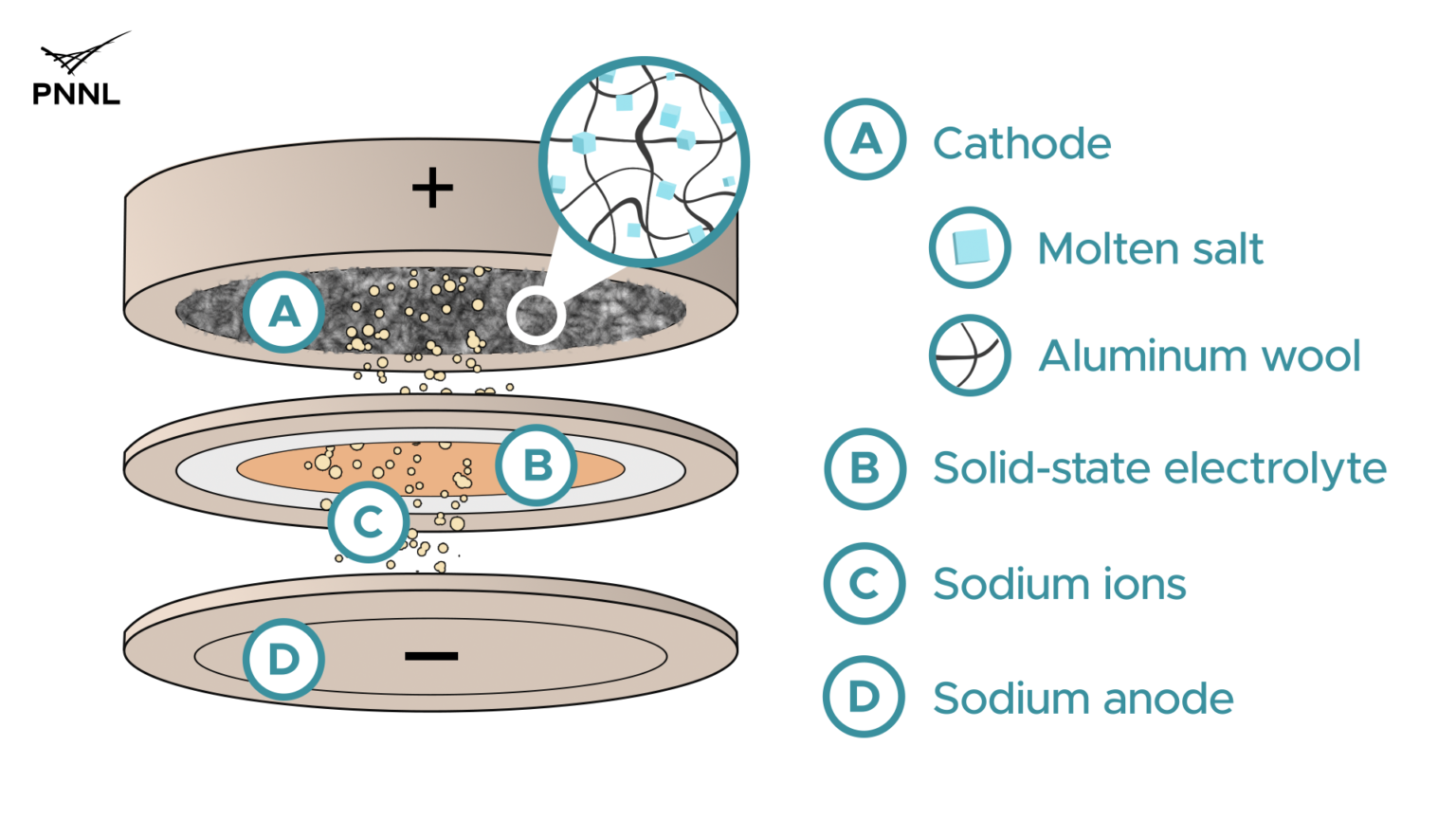1. Variation on Grid Resilience
The ability to store energy generated by renewables and release that energy on demand into the grid has fueled rapid advances in battery technology, with many new designs competing for attention. ideas and customers. Each new variant must meet its own niche use needs. Some batteries, such as PNNL’s freeze-thaw battery design, have the ability to store seasonally generated energy for months.
Compared with seasonal batteries, this new design is particularly efficient at storing short- and medium-term grid energy for 12 to 24 hours. It is a variant of what is known as a sodium-metal halide battery. A similar design using a nickel cathode as part of the system has proven to be effective on a commercial scale and is commercially available.
“We eliminated the need for nickel, a relatively scarce and expensive element without sacrificing battery performance,” says Li. “Another advantage of using aluminum over nickel is that the aluminum cathode charges faster, which is important to enable the longer discharge times shown in this study.”
Having reached this milestone, the team is focusing on further improvements to increase discharge duration, which could significantly improve the grid’s flexibility to incorporate more renewable sources of electricity. create.
And because it operates at lower temperatures, it can be manufactured using inexpensive battery materials, instead of requiring more expensive and complex components and processes as in conventional high-temperature sodium batteries. , said David Reed, PNNL battery expert and study co-author.

2. Store more grid energy at a lower cost
By 2023, the most advanced grid energy storage technology uses lithium-ion batteries, which can store about four hours of energy, Sprenkle said. “This new system could significantly increase the capacity of stored energy if we can achieve the projected cost targets for materials and manufacturing,” he added.
As part of the study, the researchers estimate that an inexpensive raw material-based sodium-aluminum battery design could cost as little as $7.02 per kWh for the active materials. Through optimization and increasing the actual power density, they predict that this cost can be further lowered. This promising low-cost, grid-scale storage technology could enable intermittent renewable energy sources such as wind and solar to make a more dynamic contribution to the national grid.
Neil Kidner, study co-author and president of Adena Power, a maker of sodium solid-state batteries, is working with PNNL to develop sodium-based battery technology. “This study demonstrates that our sodium electrolyte works not only with our patented technology but also with the aluminum-sodium battery design,” he said. “We look forward to continuing to work with the PNNL research team to advance sodium battery technology.”
The study was supported by the DOE Electric Power Office and the Korea Institute for Energy Technology Planning and Evaluation International Program of International Cooperation Energy Technology R&D. The development of the electrolyte is supported by the DOE Small Business Innovation Research program. Nuclear magnetic resonance measurements were performed at EMSL, Environmental Molecular Science Laboratory, DOE Office of Science User Facility funded by the Biological and Environmental Research program.



